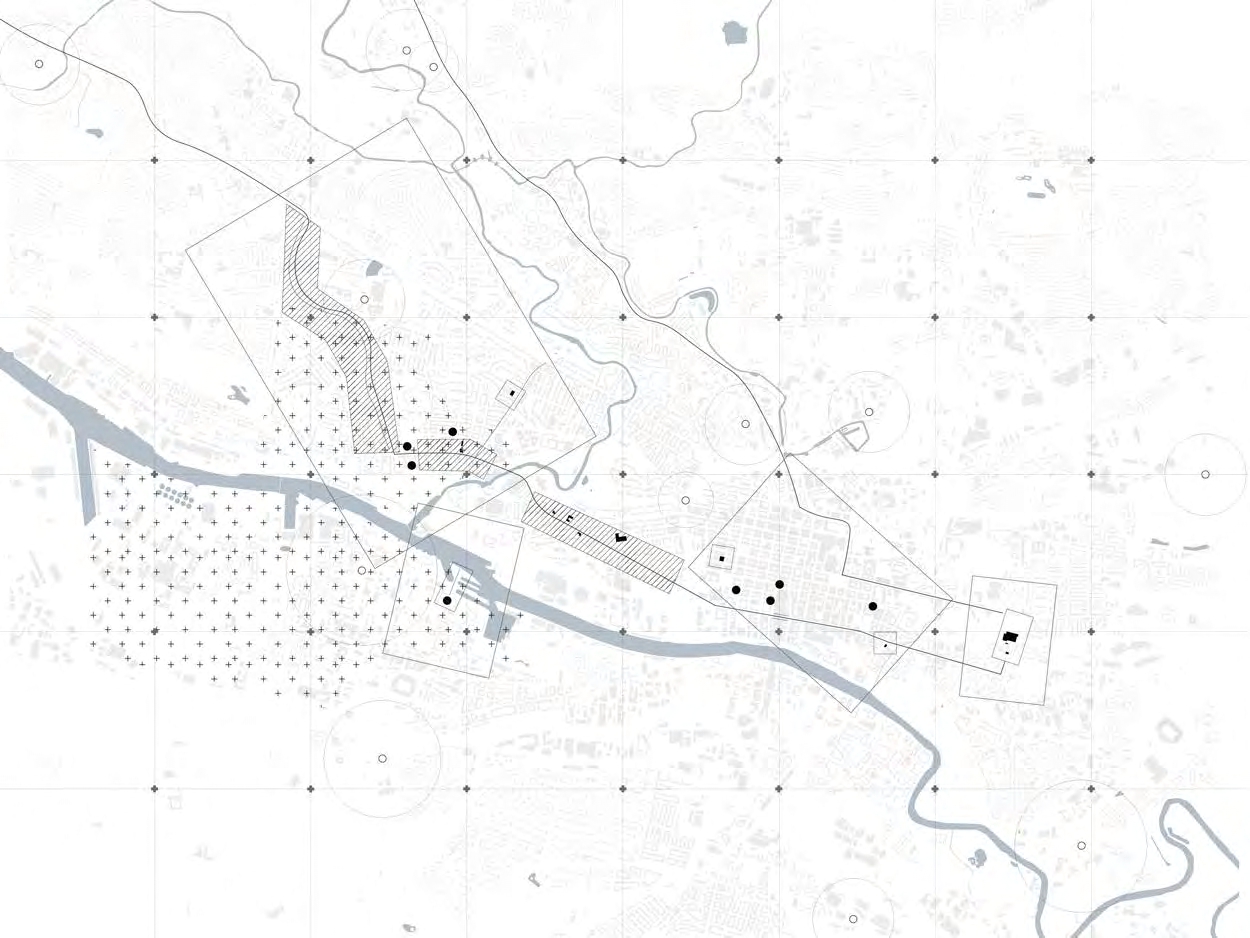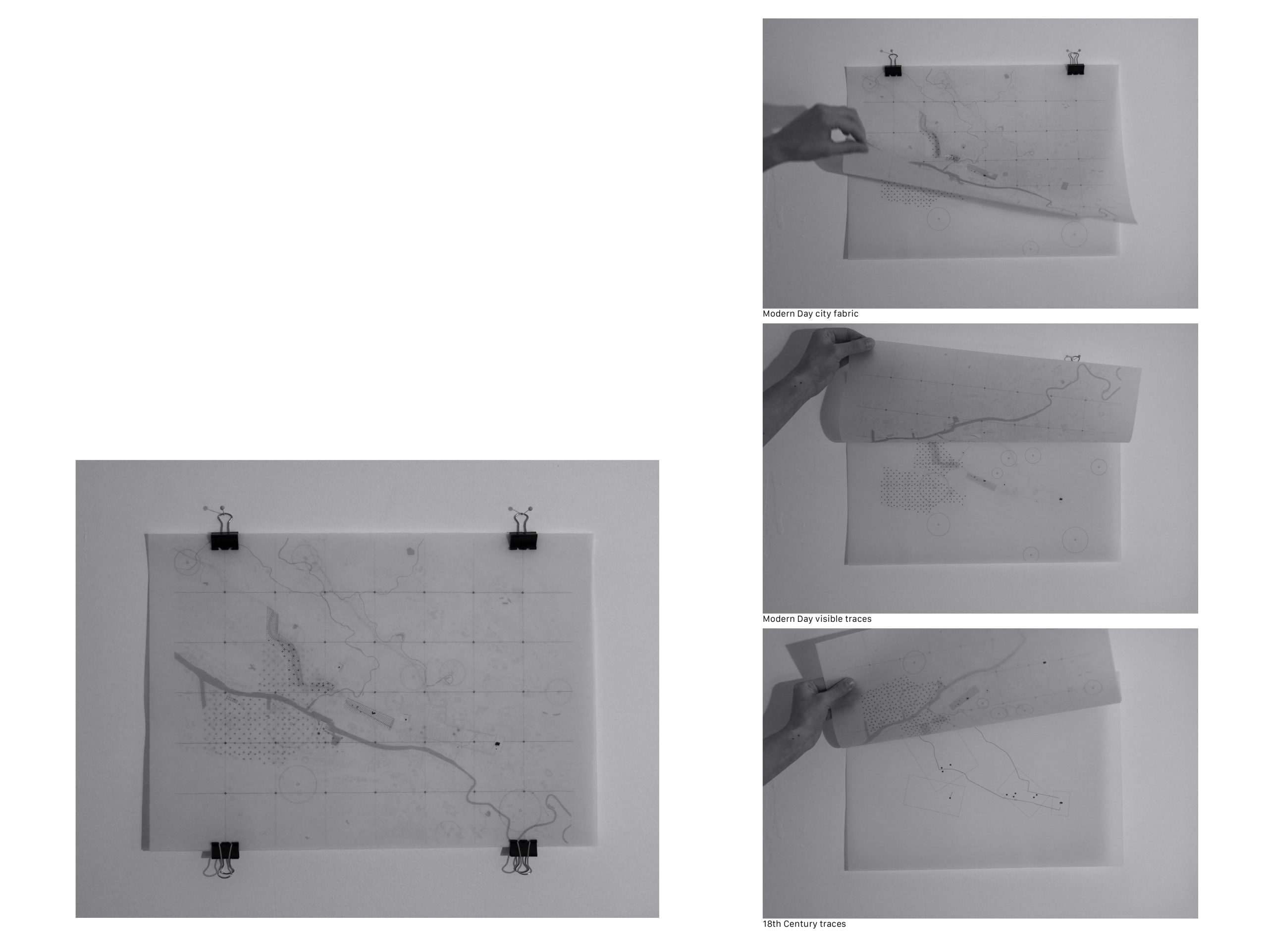This map aims to display the layering of historical routes, remains and current social traces of Gaelic and West Coast communities left upon the urban fabric of Glasgow, of both culture and the diaspora of this social demographic.
Historical traces of Crow Road in Partick is labelled as the main Droving route from the Highlands. It is interesting to consider the origin of the name; Crodh being cattle in Gaelic, with the pronunciation sounding similar to “Crow”. Various markets in the East end are also visible, where Drovers would go to sell their cattle. The abattoir at Bellgrove is still visible today, however in a derelict and unused state.
In the remaining traces, place names across the city reference subtly Gaelic origin, however little more is directly visible and addresses these historical ties. A diverse collection of places of worship and education has now been reduced to one Gaelic church and one school within the city, with socializing limited to a book shop, and a collection of West Coast pubs within Finnieston that Highlanders rely on to socialize with others who share their cultural heritage.
Today’s traces show little of the important part Gaels played in the social development and diversity of the city of Glasgow. This further highlights the importance of representing this group of people within the urban fabric to raise awareness and acknowledgement of historical connections and identities, and is a clear justification for change, to better display and re-educate Glasgow about the cultural genocide of a population that is, to this day, still under-discussed and mostly ignored in the city.
Key Themes: Political, Community, Migration, Inequality, Social Infrastructure


